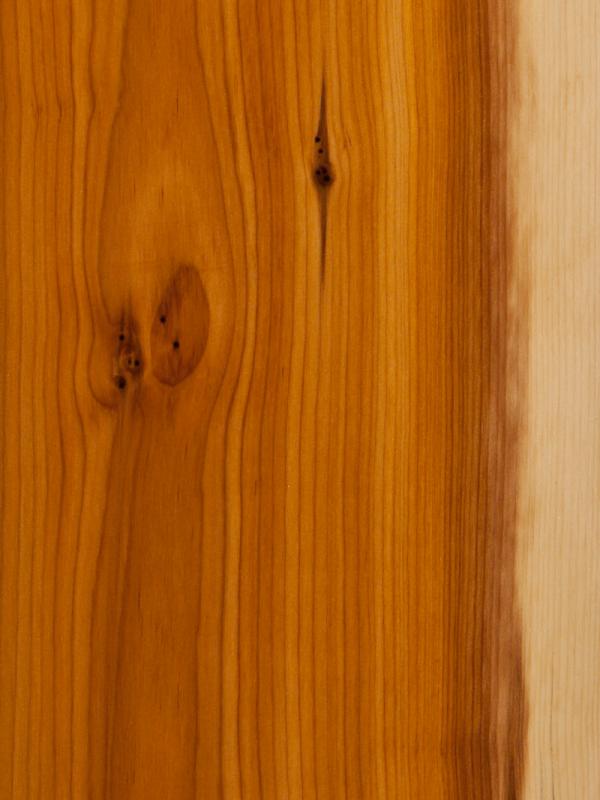
Family: Taxus Baccata, a species of an evergreen tree in the Conifer Family.
Origin: Native to Western, Central, and Southern Europe, Northwest Africa, Northern Iran, Southwest Asia.
Common Names: Common Yew, European Yew, English Yew Tree, Yew Tree.
Tree Characteristics: English Yew is small to a medium-sized evergreen tree with spreading branches and slightly drooping branchlets. The tree can grow to an average height of 33 feet to 66 feet with a deeply fluted trunk approximately 6 feet in diameter. The bark is reddish-brown with purple tones and tends to have a peeling texture. The Yew is considered one of the oldest trees in Northern Europe with a lifespan that can range from 400-600 years old. The needle-like leaves of the English Yew are poisonous. The English Yew is one of the few conifers that can easily produce new growth once the branches are cut.
Wood Appearance: Sapwood is usually a thin band of a pale yellow or tan color. The heartwood tends to be an orangish-brown, at times a darker brown or purplish hue.
Density: English Yew is considered one of the hardest woods of all softwood species. The density of the Yew tends to align more with that of a heavy hardwood. The wood itself is very flexible, yet strong. Average reported specific gravity ranges from .55 to .67 with an average dry weight of 42 pounds per cubic foot. Janka Hardness is 1,520 pounds of force.
Drying and Shrinkage: English Yew tends to dry slowly and can take up to 2-3 years to season fully. Average shrinkage values are as follows: 3.0% radial, 5.2% tangential, 8.2% volumetric.
Working Properties: This wood tends to be easy to work with, though knots and other grain irregularities can pose a challenge. Yew glues, finishes, and turns well.
Durability: English Yew ranges from durable to very durable regarding decay resistance. It is also resistant to insect attack.
Uses: English Yew can be used for archery bows, veneers, cabinetry, furniture, carvings, musical instruments (lutes), and turned objects.
Availability: English Yew is relatively uncommon. The larger size tree trunks are usually hollow. Since most trunks are full of knots, selection and size is somewhat limited. Sections of wood can sometimes be obtained for moderate prices. The overall cost of usable wood tends to be high.